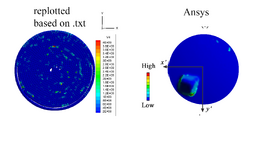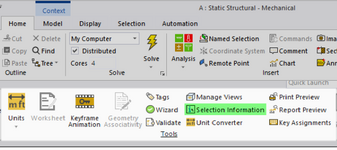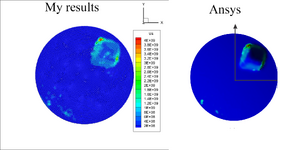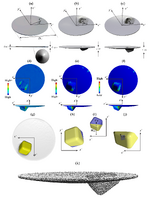Good day,
I have used Ansys workbench mechanical to calculate the stresses. When I tried to export my results, I could only see the node number versus the stress value (see the example below).
Node Number Equivalent (von-Mises) Stress (Pa)
3015 5.1049e+007
How can I get the coordinates of node number 3015? I appreciate your help.
I have used Ansys workbench mechanical to calculate the stresses. When I tried to export my results, I could only see the node number versus the stress value (see the example below).
Node Number Equivalent (von-Mises) Stress (Pa)
3015 5.1049e+007
How can I get the coordinates of node number 3015? I appreciate your help.






